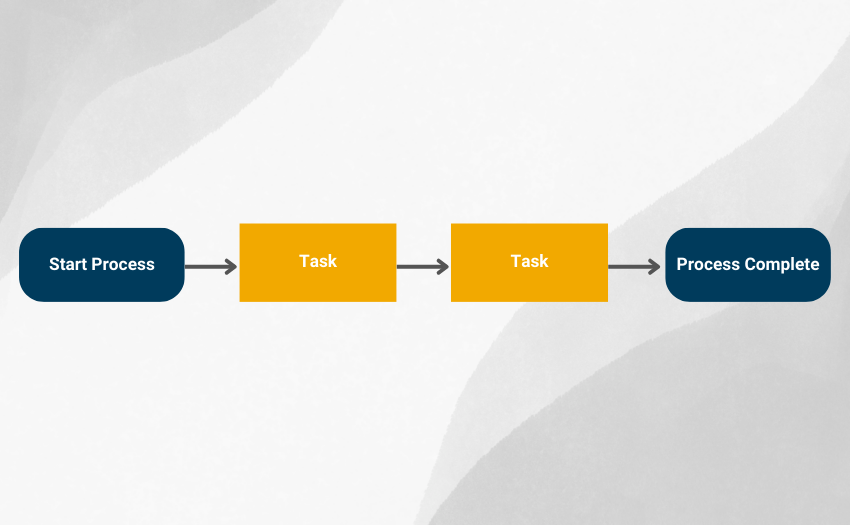Unlike value stream mapping, which is particular to mapping out the process of value delivery to the customer, process mapping outlines any business process, workflow, or procedure within an organization.
For example, a sales team may create a process map that details how each account manager searches for leads. The map would include detailed information at each step in the prospecting process, including all tasks involved, the flow of information in and out, decision points, and where the process starts and ends.
Process mapping can be used to analyze any operation within a team, and like value stream mapping, it allows for waste reduction and process improvement.
Key Features
Clarity: Process mapping provides a visual picture of the steps involved in a particular procedure.
Standardization: In studying and improving a process map, teams develop a standard way of working and communicating that optimizes all steps involved in the workflow.
Identification of Bottlenecks: Organizations are empowered to identify inefficiencies across operations and implement streamlining efforts.
Visibility & Communication: By creating a process map for a particular departmental function, colleagues gain more visibility into their team members' work, collaborative efforts are fostered, and onboarding employees have a step-by-step guide in their job functions.
Continuous Improvement: A process map provides a baseline for measuring changes and enhancements to a process over time.
Steps to Create and Use a Process Map
- Identify the process to be mapped
- Gather data
- Organize process steps into a visual format
- Analyze the current state of the process
- Discover inefficiencies
- Streamline & standardize
The Benefits of Process Mapping
Through process mapping, teams gain a deeper understanding of individual processes across the organization. By analyzing a particular workflow in a visual format, team members can more easily identify where processing time, resources, or energy is wasted, enabling them to streamline and standardize their processes.
The tool promotes enhanced communication and transparency among colleagues by providing a visual aid for discussing and coordinating collaborative efforts. Detailed process maps can also be incredibly useful in educating new and existing employees on streamlined workflows.
Finally, the technique supports organizational agility by reinforcing a productive mindset in employees, boosting performance and industry advantage.
How to Choose Between Value Stream Mapping and Process Mapping







